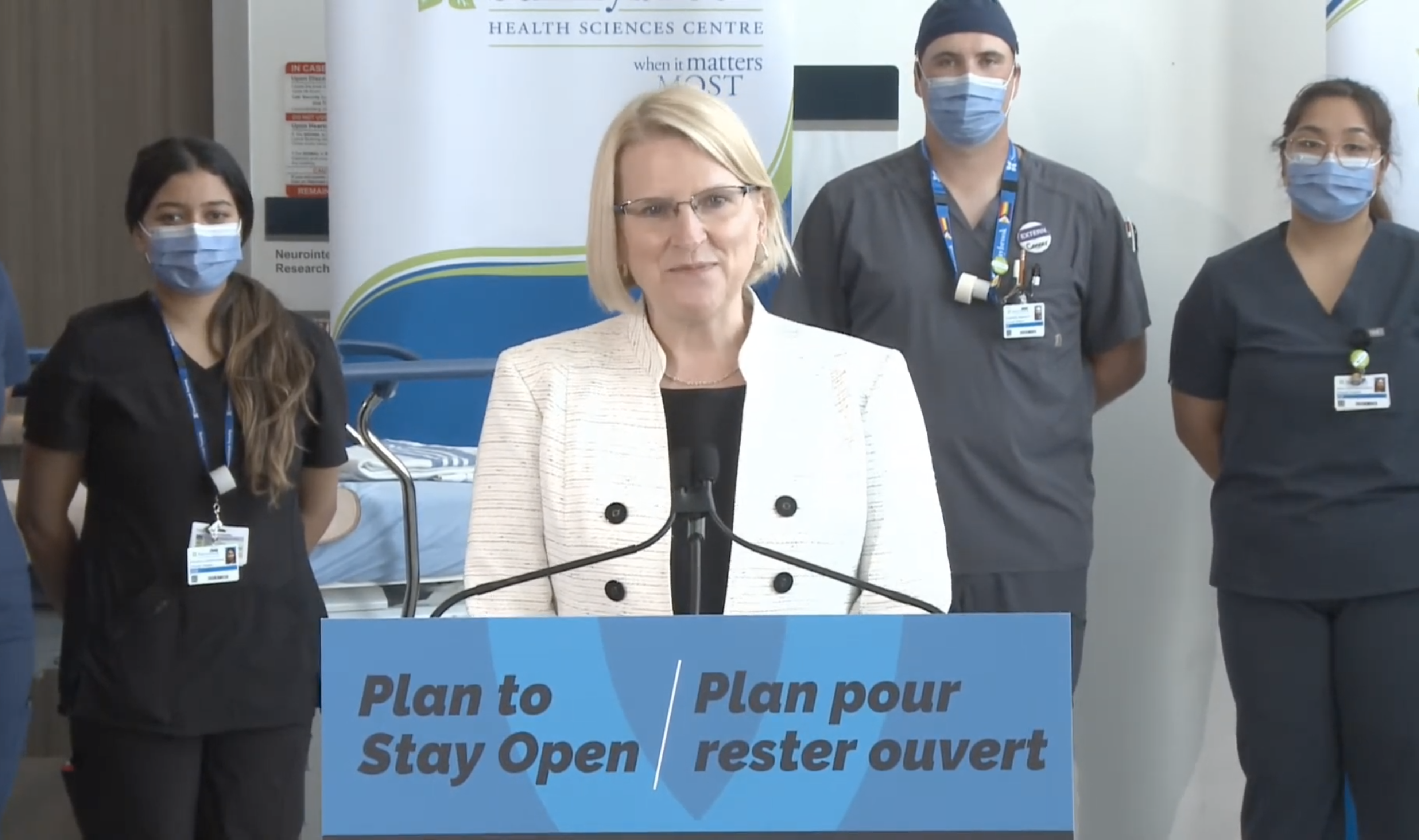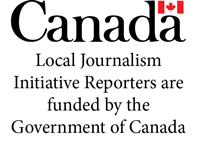TORONTO – In preparation for a potential winter surge in hospitals, the Ontario government has released phase two of its “Plan to Stay Open,” which includes investments in privatized care.
On Aug. 18, Deputy Premier and Minister of Health Sylvia Jones announced the plan, which aims “to address the urgent pressures of today while preparing for a potential winter surge so [the] province and economy can stay open.”
“We know that even more needs to be done to improve patient care and support our healthcare workers,” Jones said in her address.
“We can no longer accept the status quo.
“There are some who will fight for the status quo no matter what. They’re ideologically opposed to change or improvements. We won’t accept that. We can’t accept that.”
Officials say the next phase includes the addition of up to 6,000 health care workers, including nurses and personal support workers.
Jones said it will also free up over 2,500 hospital beds and provide more efficient care to avoid unnecessary visits to emergency departments.
Privatization?
Major parts of the plan include:
- placing senior hospital patients in long-term care homes, possibly in a different community, “while they wait for their preferred home”;
- spending over $300 million in 2022–23 as part of the province’s surgical recovery strategy;
- increasing the number of OHIP-covered surgical procedures performed at “independent health facilities”;
- more spending to increase surgeries in paediatric hospitals and “existing private clinics covered by OHIP”;
- funding more than 150,000 additional operating hours for hospital-based MRI and CT machines;
- launching an emergency department peer-to-peer program to provide support and coaching to help in rural hospitals;
- adding 400 physician residents “to support the workforce in northern and rural Ontario”;
- working with the College of Physicians and Surgeons of Ontario “to expedite the registration of doctors, including those from out-of-province”;
- working with the College of Nurses of Ontario and Ontario Health “to expand funding for the supervised practice experience partnership program”; and
- stabilizing increasing agency rates for nurses.
The Doug Ford government has previously suggested the privatization of health care was being considered to relieve the burden on hospitals.
Jones was adamant during Thursday’s announcement that Ontarians will continue to be able to access services using their OHIP card.
She said there is value in investing in pre-existing independent clinics to take pressure off healthcare partners.
“We need to be bold, innovative and creative,” Jones said.
“And we need to be clear, Ontarian’s will always access health care with their OHIP card.
“Many of those independent healthcare facilities have arrangements and work directly with their local community hospital to make sure that they are providing the services that are adding the greatest pressure,” she added.
“At the end of the day this about ensuring that when you need that surgery, when you need that diagnosis, it’s available to you.”
ONA: privatization ‘will only benefit shareholders’
In response to Thursday’s announcement, the Ontario Nurses’ Association (ONA), which represents more than 68,000 registered nurses and health-care professionals, voiced concerns about the government’s plans.
“This is a blatant move that will line the pockets of investors, nothing more,” said ONA president Cathryn Hoy in an Aug. 18 statement.
“The evidence is clear: health-care privatization provides worse health outcomes to our patients and has much higher overhead costs which will be paid by taxpayers.”
She added, “Ontario is deep-diving into privatization that will only benefit shareholders.”
Hoy suggested the government’s plan “is nothing more than shuffling deck chairs on the Titanic.”
She said “placing patients into ‘vacant’ long-term care beds and ‘alternative health facilities’ is another disaster waiting to happen … Adding more patients and residents will do nothing but create additional chaos.”
The government announced an initiative to support emergency department (ED) physicians through a peer-to-peer program to ease pressure on EDs, but ONA officials are shocked at the lack of support for nurses.
“Dozens of emergency departments were closed over the past few weeks due to a shortage of nurses,” Hoy said.
“The government missed a huge opportunity here to bolster nurse compensation as a key to retention and recruitment to curb additional closures.”
Countless healthcare officials have argued for some time that repealing Bill 124, which caps salary increases for nurses at 1%, is an important step to retaining and attracting qualified nurses.
However, the province’s announcement on Thursday made no mention of the legislation.




